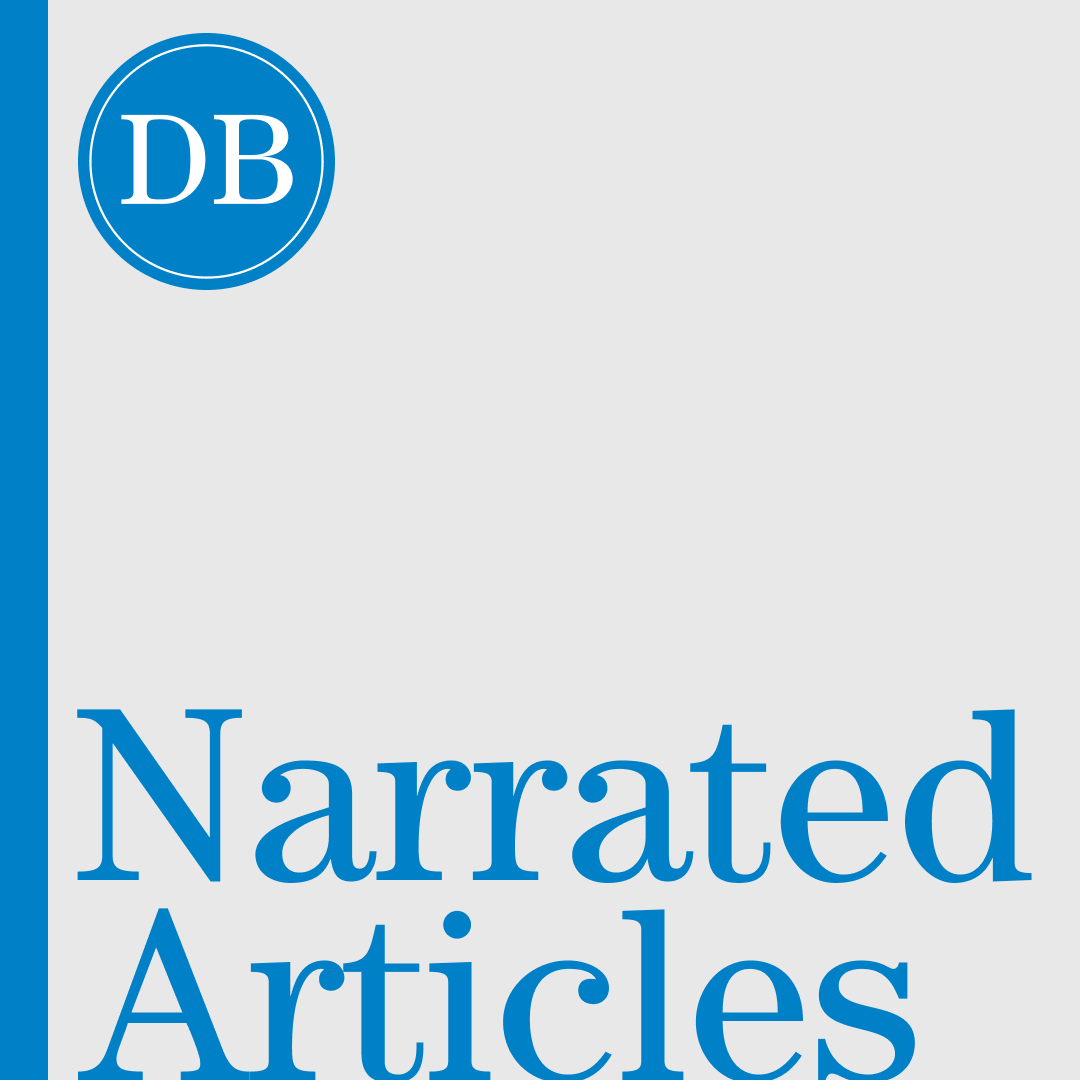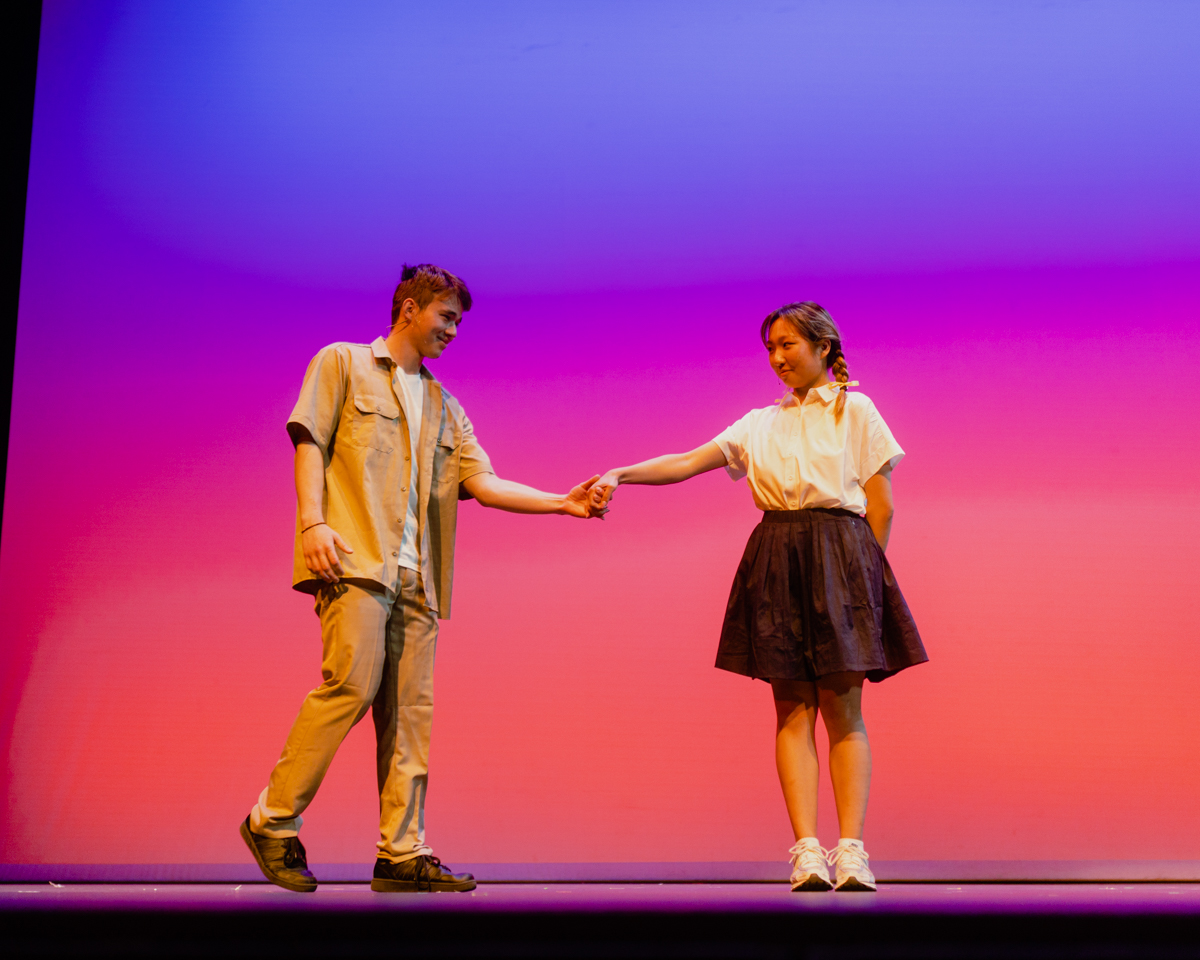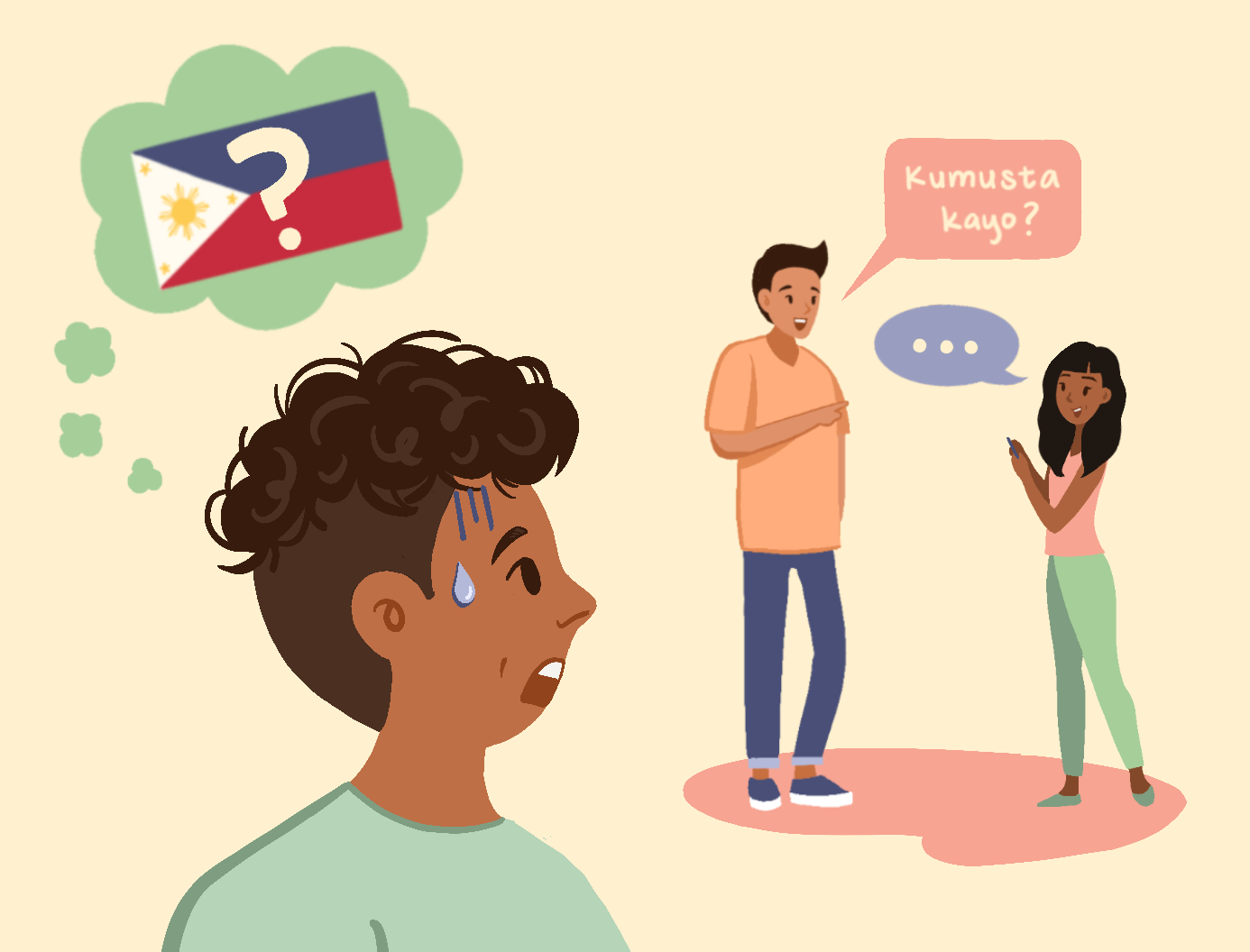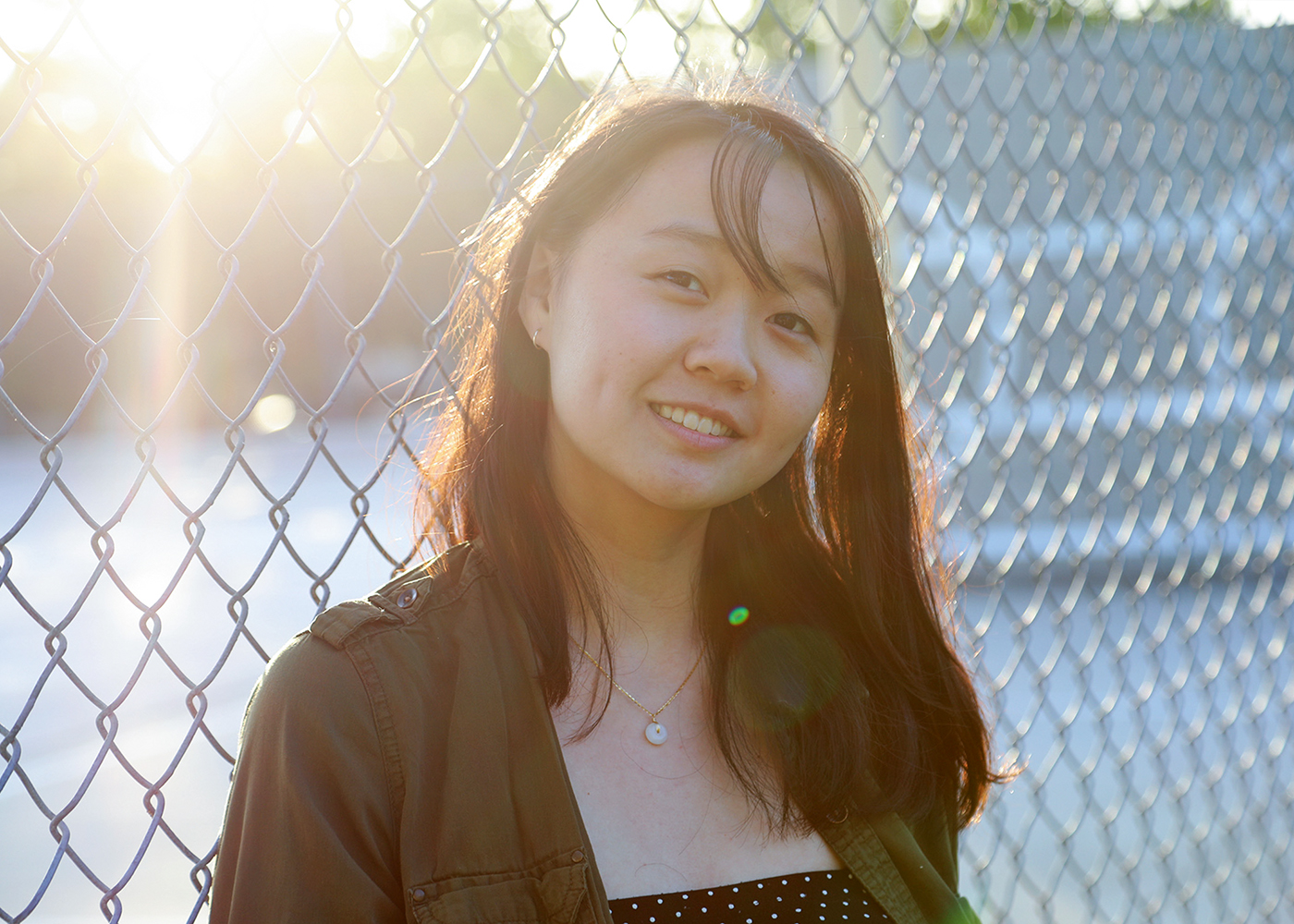Narrated Articles — PRIME: Mixed Feelings, Twisted Tongues

Photo credit: Helen Quach
By Gwendolyn Lopez
March 12, 2024 9:37 a.m.
Listen to Daily Bruin PRIME writer Gwendolyn Lopez read her column about her relationship with multilingualism and her blended Chinese American and Mexican American identity. The article was published in PRIME Winter 2024 on March 6, 2024.
Mixed Feelings, Twisted Tongues
“Ay, mija, ¡qué gusto verte!”
Before I could think to say anything, my tía Lupita wrapped me in a crushing embrace. Her cross necklace and gold hoop earrings pressed against my skin, and her flowery perfume enveloped me. Beaming, she smacked a wet kiss onto my right cheek. I smiled back, trying to ignore the uncomfortable feeling of her damp lipstick mark.
“Hola,” I said on reflex, then suppressed a grimace. A lifetime of learning Spanish, and that was the most I could say? How about, “It’s good to see you too,” or, “It’s been so long”? As I fumbled for the right words, a reply surfaced in my mind, but it wasn’t in Spanish, or even in English.
“真的好久不见,” I began to say. As the first syllable slipped out, I realized my obvious mistake – wrong language.
“I’m so glad you and your father were able to make it tonight,” my tía gushed, oblivious to my blunder. My cheeks burned with shame. “We’ve missed you so much here in Guadalajara, and we would have come to visit you in Los Ángeles, pero ya sabes, it’s been so busy…”
It was easy to listen and nod as my tía went on, but inside, I felt struck by a sudden panic. My family and I had flown over to attend my older cousin Diana’s quinceañera. But instead of a celebration, this night felt like a test of my identity.
Since childhood, my parents have harbored the dream of multilingualism for me, hoping I would inherit both their Mexican and Chinese cultures. They envisioned a daughter who easily spoke Spanish with her tía at one turn and could code-switch to Mandarin at another. However, with each year I have found it increasingly difficult to juggle my three languages while maintaining my sense of self.
Diana’s quinceañera marked my return to Guadalajara after five years away. Though muddled by time, I still remember my days there: the sweltering, cloudy skies, the color and traffic of the city’s center, the agave and feathergrass sprawling at its outskirts. In the summers before I turned 6 and 7, I would cram into my tía’s car with my cousins and drive to the rural countryside. There, we’d play on tire swings and joke in comfortable Spanish, swatting the mosquitos that hungrily crowded at our exposed skin.
At the quinceañera, standing in the glittering banquet hall wearing a scratchy dress, none of that familiarity coursed back to me. I could easily understand every fluid word out of my tía’s mouth, but when it came time for me to speak, my tongue felt limp and useless. My mind stubbornly continued to conjure furious translations in Mandarin, as if to prove I could speak some language at least, any language that wasn’t English.
Eventually, my tía floated off to greet some other relatives, giving them her signature hug and right-cheeked kiss.
I thought, “I can’t do this.”
I should have been able to. I was Mexican American – I had a Mexican last name; I understood the language, the culture. And yet, despite it all, I had failed my test.
This hollow feeling of shame was nothing new. Growing up in a multicultural home, I often felt torn between my parents’ two languages and sets of expectations.
My mother and father met at UCLA in the ‘90s, when they were placed in the same carpool group for commuters. Although my father spent most of his time on North Campus as an English student and most of my mother’s biology classes were in South Campus, they frequently met up to study together at the Inverted Fountain.
She was Chinese American, and he was Mexican American. When I was born, they decided I should spend as much time as possible absorbing the languages of both their home countries.
I attended preschools in China and Mexico before entering the LA public school system for elementary school. In one of my earliest memories, I am walking down a Shanghai sidewalk with my maternal grandmother, my 婆婆. We stroll over to the daycare center, and when we arrive, the babysitter greets me in sunny Mandarin. I don’t remember what I say in response – only that it is natural and effortless.
Years later in LA, my 婆婆 loved to remind me of my childhood talent for language. She was a short, sour-faced woman with a slight distaste for the United States and my father, always busying herself with some sort of project. When she wasn’t badgering me over my middle and high school grades, she frequently reminisced about her time in China.
“你还在好好地练习国语吗?” she asked as I hunched over one of my homework worksheets. At 13, my days of jetting between countries were over, and I was enrolled in a public Mandarin dual-language immersion middle school. I was starting to resent studying this convoluted language. The hours of grammar exercises felt so different from the easy conversations in Shanghai years ago, and I only seemed to get worse with time.
“It’s OK,” I said in English.
She scowled. “什么 ‘OK’ 啊? 要继续努力. When you were young, don’t you remember? You were the best of the class. Look, look.”
My 婆婆 opened a nearby drawer and dug out some weathered sheets of paper. I peered at the nearly faded pencil scrawl of repeated Chinese characters in gridded squares. The 6-year-old version of me had scrawled her name – in Mandarin – along the top.
“That was a long time ago,” I said in Mandarin.
“You used to be so good,” she gushed in Mandarin. “Every day you’d come up to me and ask for a new Chinese book or a new worksheet. I still have your old books, too.”
I didn’t have the heart to tell her I was not the same person anymore. When it came to language, I no longer had that same childhood flexibility.
I glanced over at my father listening from across the room, a Spanish book splayed open in his hands. He didn’t flinch as my grandmother and I spoke; it was a normal occurrence, speaking Mandarin at home. What wasn’t normal was my father and I speaking in Spanish.
Unlike my mother, who immigrated from Hong Kong at 8 years old, my father was born in LA. My mother shied away from her mother tongue for the assimilation of speaking English. But my father furiously chased after fluency in Mexican Spanish. Books, movies, TV shows, music – anything in Spanish, anything related to Mexican culture that he could get his hands on – he devoured.
“You have to immerse yourself in it,” he told me once, showing me his latest read on Mexican American politics. “If you lived in Mexico for a year or two, your Spanish would be so much better.”
It was a hypothetical statement, but a part of me suspected my father would have preferred that Spanish-fluent and truly Mexican version of me.
Instead, I dutifully studied Mandarin and lived in a suburban, predominantly Asian American neighborhood. Sometimes, I felt as if I was disappointing my father by speaking Mandarin in class every day or celebrating 中秋节 in September instead of only having El Grito de Independencia to look forward to. Whenever I accepted the lotus seed paste 月饼 that my 婆婆 bought for me during the festival, I wondered if I was betraying my Mexican side by embracing my Chinese culture.
After returning to the U.S. from my cousin’s quinceañera, I chewed over my identity with renewed vigor. How should a real Mexican act? How would a real Chinese American act? And what was I – who didn’t quite align with either side – supposed to do?
My classmates frequently reminded me that I was not the only one pondering my identity.
Once, in a high school math class, a girl sitting beside me asked, “So, what are you?”
“What does that mean?” I responded, taken aback.
“Like, where are your parents from? Actually, let me guess.” She gave me a once-over and frowned. “Your hair’s kind of red. Are you Romanian?”
I stared at her, stunned. I quickly recovered and gave her the usual spiel: my parents are Chinese and Mexican American; I am multiracial. But the barb of her offhand comment stung just as much as the other dozen times I had fielded the inquiry.
My classmate’s prying did little to help with the growing sensation that my jigsaw identity did not fit in anywhere. I internally felt so deeply connected with my mixed heritage that I could not imagine being only two separate things. But her words reminded me of the external instinct to categorize me as one, the other or neither – more Chinese because I spoke with my mother’s relatives in Mandarin, or more Mexican because I didn’t share my maternal family’s East Asian features.
Instead of absorbing our lesson on polynomials, I spent the rest of the school day stewing over how inclusion in one group inevitably kicked me out of the other.
I felt the complicated weight of my culture most strongly when I was in high school and middle school, surrounded by East Asian peers whose parents had enrolled them to improve their Mandarin abilities. While my classmates found camaraderie in their Asian parents’ expectations of high grades, I smiled and nodded along. I did not explain how my Asian family’s main expectation of me was to prove I was really Asian.
Arriving at UCLA and following in my parents’ footsteps, I am thinking about my identity more than ever.
After the first few times dodging flyers on Bruin Walk, I realized many of the fundraisers along the path were for cultural organizations. As I continued acclimating to campus life and the rigorous quarter system, unflinching cultural celebration caught my eye – from Latinx Admit Weekend to the traditional lion dance practices I passed while walking back to the Hill.
Seeing this diversity motivated me to search for my own space on campus. To my surprise, I discovered a multiracial subculture, with organizations such as the Mixed Student Union and the UCLA Mixed Alumni Association advertising spaces specifically for students like me. It was such an obvious yet novel notion to me – that mixed people should find community in our differences, rather than alienation.
I sometimes pass by the Inverted Fountain while heading to my classes. The sight reminds me of my parents’ UCLA stories and how they were able to overcome their cultural differences. Combined with the sheer diversity of UCLA’s campus and languages, I’m brought back to contemplating my place within my family.
I realized I had not failed any test at all, back at the quinceañera. When compared to my family’s deep love for both their hometowns and for me, my rocky relationship with language does not seem so all-encompassing. I finally felt ready to embrace every part of my culture – both on campus and at home.
A Spanish saying my father told me, no doubt from one of his many books, comes to mind.
“Caminante, no hay camino,” he said. “Se hace camino al andar.”
“Traveler, there is no path. The path is made by walking.”






